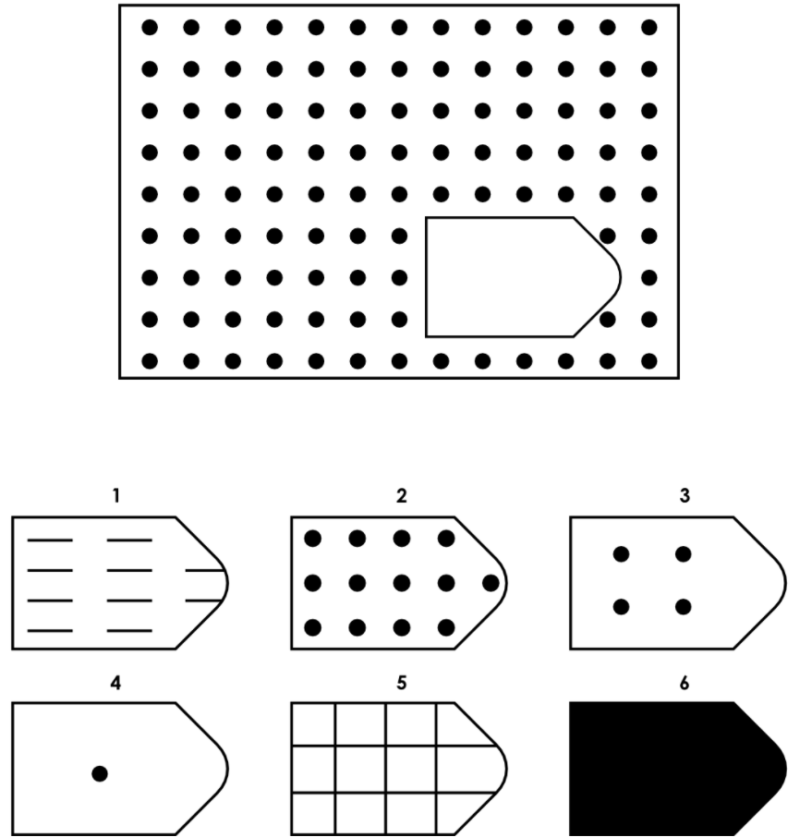The Raven’s Test is a test used to measure intelligence through the resolution of matrices. Learn how to solve the test, what it consists of, and how to interpret the results.
The Raven Progressive Matrices test is a psychometric test whose main objective is to measure an elementary component of intelligence: the ability to reason abstractly, also known as the G factor. This test was designed by John C. Raven and can be used for a psychotechnical exam, a psychological test, or a personnel selection process.
What does the Raven’s Test measure?
Psychometric tests were originally developed as tools to measure the psyche and define the various capacities of the human mind.
The Raven’s Test is one of these tools. It belongs to a group of psychometric assessments designed to evaluate intelligence — more specifically, the G factor.
By solving visual matrices and identifying the missing piece that completes each image, the Raven’s Test measures both logical reasoning and abstract thinking skills.
What is the G factor?
The Raven Matrices Test is based on the eclectic theory of two factors proposed by Charles Spearman.
According to this theory, intelligence is composed of two parts: the G factor, which represents general cognitive ability, and the S factor, which refers to specific skills influenced by learning and education.
Spearman’s bifactor model inspired Raven to develop a test that evaluates the G factor through the deduction of relationships and patterns.
In essence, the G factor reflects a person’s ability to solve logical and mathematical problems. It also gives insight into their general learning capacity, clarity of thought, and overall aptitude for intellectual activity.
What does the IQ test consist of?
The Raven Progressive Matrices Test features a series of geometric designs — or matrices — made up of non-verbal visual elements. The test takes approximately 60 minutes to complete.
To answer correctly, you must analyze the sequence and, following both the horizontal and vertical patterns, select one of the six or eight options that best completes the image.

The strategies needed to solve the test are based on the ability to abstract and interpret the situation globally. The person must use their analogical reasoning ability to interpret each matrix and find relationships between the design shapes, thus organizing the information to find the correct solution.
Types of Raven’s Test
Researchers initially developed a general scale designed to evaluate all types of individuals. Later, they created additional scales adapted to different populations.
Today, the test includes three versions, each applied based on the test subject’s age and cognitive abilities:
Standard Progressive Matrices (SPM)
The first version includes 60 matrices, grouped into five series of twelve items each (Series A, B, C, D, and E). The complexity increases as the test progresses. This version remains the most widely used and targets individuals between 12 and 65 years old. All matrices appear in black ink on a white background.
Color Progressive Matrices (CPM)
This version targets children aged 4 to 10, as well as adults with lower intellectual capacity. It contains 36 matrices divided into three series of twelve. The main differences from the general scale include:
- Fewer series: the test excludes the most difficult series and retains the simpler ones (A and B), plus an intermediate one (Series AB).
- Use of color: the colored matrices make the test more engaging and easier to understand.
- Application format: in addition to the usual response booklet, test-takers can also complete it using a board.
Advanced Progressive Matrices (APM)
This higher-level version assesses adolescents and adults with above-average intellectual ability. It includes 48 matrices organized into two series: Series I (12 items) and Series II (36 items). Each series presents a significantly higher level of difficulty compared to the standard scale.
Interpretation of the Raven’s Test
As previously explained, the Raven test requires the participant to complete a sequence of 60 matrices, divided into 5 series. After finishing the test, the evaluator adds up the correct answers and checks them against a percentile table that matches the test-taker’s age. Based on the resulting percentile, the evaluator determines the corresponding level of intellectual ability using an intelligence scale.
Percentile values serve as a reference point, making it easier to compare an individual’s performance with that of a normalized group.
For example, a percentile of 75 would indicate that out of 100 values, 75 have obtained lower scores, and 25 have obtained a higher score.
Beyond human peculiarities, the authors proposed a scale of five levels of intellectual ability (Raven, et al., 1996):
- Grade I or “intellectually superior,” percentile score of 95 or higher.
- Grade II or “above average in intellectual ability,” percentile score between 75-94.
- Grade III or “average in intellectual ability,” percentile score between 25-74.
- Grade IV or “below average in intellectual ability,” percentile score between 6-25.
- Grade V or “intellectual deficit,” percentile score of 5 or lower.
Online Raven’s Test
If you want to measure your IQ, you can take the Raven’s Test on our website or download our app Free Vocational Test.

This article is purely informational. At Vocational Test, we are not qualified to diagnose or recommend treatment. We encourage you to consult a psychologist to address your specific case.


